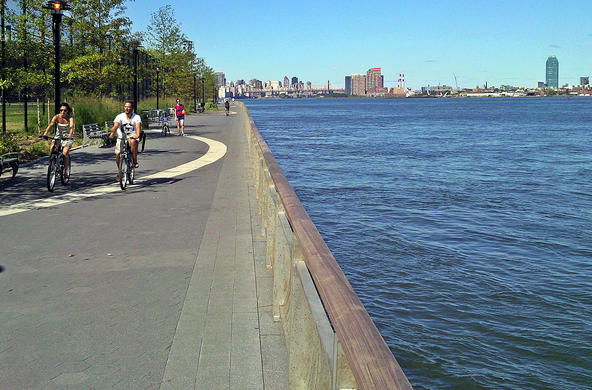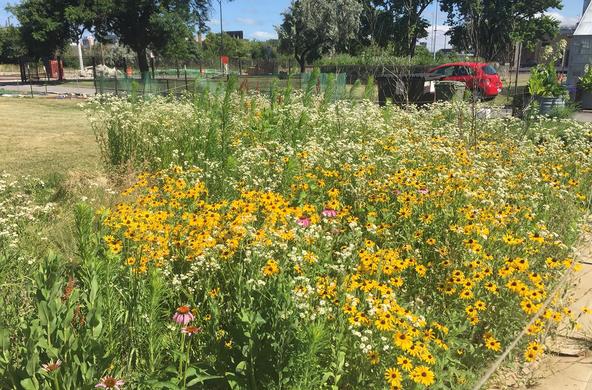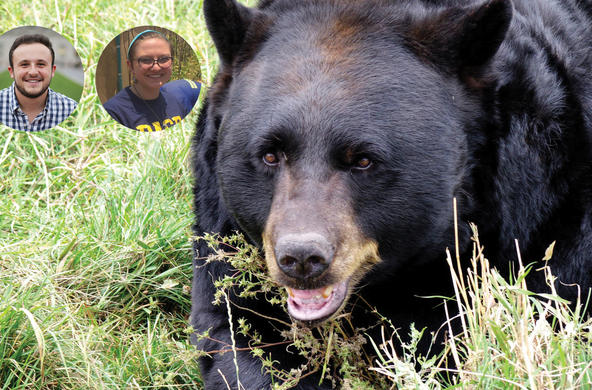Two weeks ago in this space, Dave Strayer and Gary Lovett sounded a warning about the looming local extinction of ash trees.
This almost certain event is because of the spread of the emerald ash borer, an introduced beetle species that burrows beneath the bark and kills ash trees. The catastrophic loss will not only affect the countryside but will reduce the tree cover of our streets and neighborhoods. The likelihood of losing this important tree species is a reminder of the important role trees play in our towns and cities.
Street trees are planted along sidewalks and on medians of wide streets. They are complemented by the trees planted in yards and parks. "Volunteer" trees grow from seeds carried on the wind or by birds and squirrels into hedgerows, back lots and unmanaged ground.
Altogether, street, yard and volunteer trees form an urban forest dispersed through towns and suburban settlements.
As I take my usual three-mile walk around Poughkeepsie's south side, I see large red oaks, sugar maples and even a walnut tree or two. These and other mature trees have escaped the sad fate of so many young trees whose early death brings down the average age of urban trees. The mighty green neighbors that mark my walk are many decades old, and they are an important part of my sense of place. But there is more to them than that.
The urban forest provides valuable services. Shade is the most obvious. In summer, trees protect us as we walk, bike, play, picnic or simply sit outside. Trees reduce our exposure to harmful UV radiation, but they also keep us cool by limiting the amount of heat we absorb from sunlight.
Shade trees near our homes and offices can reduce the need for air conditioning. The cooling that results from the evaporation of water from leaves also reduces the temperature in and near concentrations of trees. In neighborhoods where trees are absent, temperatures are measurably higher, and human comfort levels lower. Evergreen trees planted on the north sides of low buildings reduce wind, which can decrease winter heating bills.
There are less obvious benefits of trees being documented by research. Trees absorb small particles of pollution, resulting in cleaner air. Trees help calm the flow and level of aggression in automobile traffic, they contribute to people's sense of psychological well-being, and they appear to reduce violence. Trees and leafy green parks are often associated with increased property values. Trees have even been suggested to promote healing because early results show shorter hospital stays for patients whose windows present a leafy view.
Tree canopies intercept rainwater and lessen soil erosion. As a consequence, the amount of stormwater that must be managed is reduced, and the quality of the stormwater draining into streams and rivers is improved. This cuts the demand for wastewater treatment and plays an important part in meeting water-quality standards.
Researchers have estimated the urban forest provides so many benefits that the replacement value of trees in New York City is $6.2 billion. The wholesale loss of domestic trees is something we have experienced before.
In the 1920s, the American elm, which was widely planted as a graceful canopy over many American streets, was struck down by the accidentally introduced Dutch elm disease. Within a few years, parks, streets, yards and even rural forests lost almost all their elm trees. Because of the expense of replacing so many trees, some cities and neighborhoods remain almost treeless to this day.
The lessons are many. First, we must protect our existing urban forest by preventing the importation of diseases and pests that attack trees. Second, we can expand the urban forest by planting and caring for trees along streets and in parks and yards. Street trees have a remarkably short life span, amounting to 10 years on average.
Replacing dead and diseased trees, watering young saplings in front of your house or business, and supporting municipal plans for tree planting and maintenance are among the actions you can take to enhance the urban forest.






